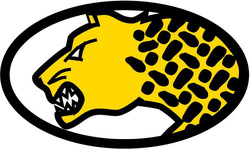Attributes of the Five Animals: Leopard
Imagery:
Lean and fast, the leopard is a flurry of combative movement. Maneuvering quickly, the leopard will instantly adjust from one angle to another, leaving his prey outwitted. Many can withstand the leopard's first blow, but then will be buried by the onslaught of his furious combinations. From the great Sun Tzu we learn, "Rapidity is the essence of war."
Essence:
Strength. The "strength" of the leopard is not from his large, massive muscles, but rather from his lean and explosive body that allows tremendous speed. Although the immortal Bruce Lee was nicknamed "The Little Dragon", his body type and explosive speed of movement was a perfect example of the essence of the leopard.
Offensive/Defensive:
The leopard's style of movement is quite successful as an offense against the dragon, because the leopard does not commit his momentum enough to be thrown off balance. When attacking a snake, the leopard will usually find himself at a tremendous disadvantage because the snake can limit the leopard's strongest asset -- his mobility.
Quality of Movement:
Agility (speed). In a broader sense, the leopard is an extremely agile creature who controls the direction and velocity of his body with the amazing ability to adjust while in motion. The most notable manifestation of this agility is the speed which results from the leopard's movements. In professional boxing, this quality of the leopard is often witnessed in the lighter weight boxers who can throw incredible combinations of punches and also slip and weave defensively with the utmost of skill.
Quality of Character:
Decorum. Decorum involves the understanding of appropriate etiquette. For centuries, mothers have attempted to teach this virtue to their wayward sons at the dinner table. In the martial arts, the traditional bows are one of the ways that decorum is taught and maintained. Decorum is the outward demonstration of an inner respect and appreciation.
Combative Strategy:
Snap and rake. Unlike his larger cousin, the tiger, the leopard does not generally have the mass and power to crush his victim with one blow. Instead, the leopard orchestrates combinations of blows that then harmonize into the overall devastation of the opponent. Whether moving on a line or circle, the leopard returns back from his strike with even greater speed than he advanced.
Stances/Postures:
The leopard utilizes stances as a transitional platform from which to launch his weapons. Often, the transition between stances becomes the opportunity for the leopard to unleash his deadly flurry.
Empty Hand Weapons:
The leopard paw and cat paw are utilized to the throat and rib areas. The fist and foot are also used in a snapping fashion to most any available target.
Weapons:
Double sticks or the nunchaku adopt well to the leopard's need to strike quickly on a variety of angles.
Attributes of the Five Animals: The Leopard. © 1999 Trevor Haines
Lean and fast, the leopard is a flurry of combative movement. Maneuvering quickly, the leopard will instantly adjust from one angle to another, leaving his prey outwitted. Many can withstand the leopard's first blow, but then will be buried by the onslaught of his furious combinations. From the great Sun Tzu we learn, "Rapidity is the essence of war."
Essence:
Strength. The "strength" of the leopard is not from his large, massive muscles, but rather from his lean and explosive body that allows tremendous speed. Although the immortal Bruce Lee was nicknamed "The Little Dragon", his body type and explosive speed of movement was a perfect example of the essence of the leopard.
Offensive/Defensive:
The leopard's style of movement is quite successful as an offense against the dragon, because the leopard does not commit his momentum enough to be thrown off balance. When attacking a snake, the leopard will usually find himself at a tremendous disadvantage because the snake can limit the leopard's strongest asset -- his mobility.
Quality of Movement:
Agility (speed). In a broader sense, the leopard is an extremely agile creature who controls the direction and velocity of his body with the amazing ability to adjust while in motion. The most notable manifestation of this agility is the speed which results from the leopard's movements. In professional boxing, this quality of the leopard is often witnessed in the lighter weight boxers who can throw incredible combinations of punches and also slip and weave defensively with the utmost of skill.
Quality of Character:
Decorum. Decorum involves the understanding of appropriate etiquette. For centuries, mothers have attempted to teach this virtue to their wayward sons at the dinner table. In the martial arts, the traditional bows are one of the ways that decorum is taught and maintained. Decorum is the outward demonstration of an inner respect and appreciation.
Combative Strategy:
Snap and rake. Unlike his larger cousin, the tiger, the leopard does not generally have the mass and power to crush his victim with one blow. Instead, the leopard orchestrates combinations of blows that then harmonize into the overall devastation of the opponent. Whether moving on a line or circle, the leopard returns back from his strike with even greater speed than he advanced.
Stances/Postures:
The leopard utilizes stances as a transitional platform from which to launch his weapons. Often, the transition between stances becomes the opportunity for the leopard to unleash his deadly flurry.
Empty Hand Weapons:
The leopard paw and cat paw are utilized to the throat and rib areas. The fist and foot are also used in a snapping fashion to most any available target.
Weapons:
Double sticks or the nunchaku adopt well to the leopard's need to strike quickly on a variety of angles.
Attributes of the Five Animals: The Leopard. © 1999 Trevor Haines
